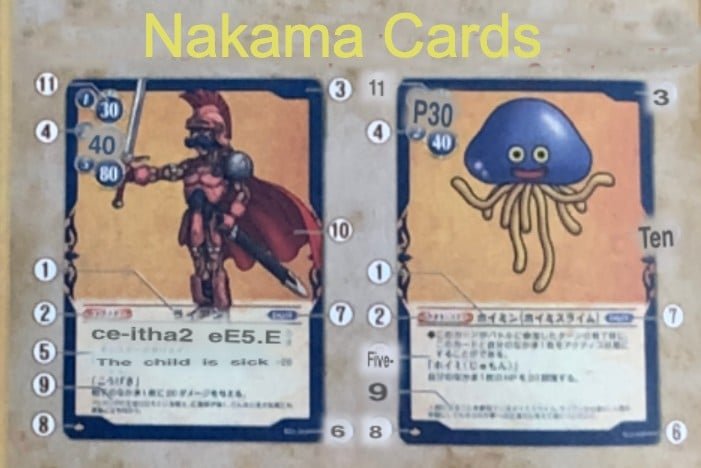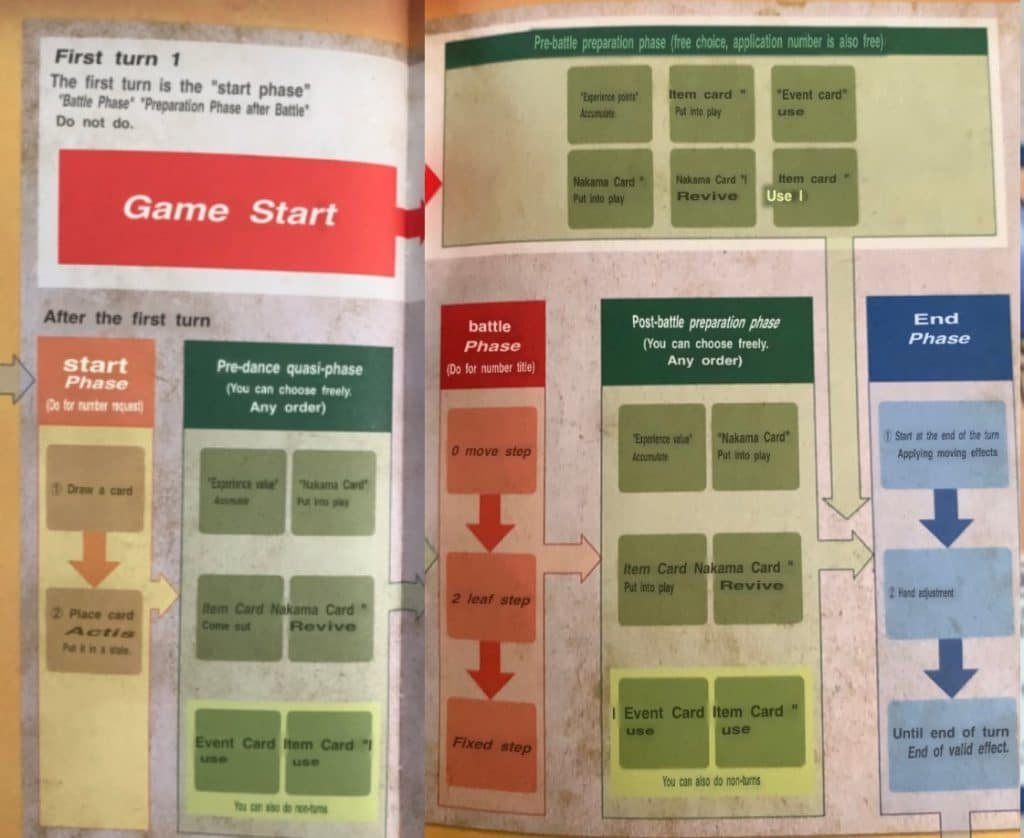The Dragon Quest Trading Card Game (DQTCG) has been out for a number of years. Not to be confused with Dragon Quest Rivals or some of the other DQ card games out there, the Dragon Quest TCG (like a lot of Dragon Quest stuff) is only available in Japanese. I couldn't find a guide about how to play, so I worked on translating the rulebook myself and figuring it out. Hopefully, this helps other people learn how to play as well.
Additionally, if you don't want to shell out the money for these cards yourself, the Dragon's Den has some amazing images of the cards from the DQ X starter deck, which I assume you can just print off. So, it shouldn't be too hard to create your own deck for the DQTCG and save money at the same time. You can find those card scans on the Dragon's Den right here.
How Dragon Quest TCG's Cards Work
There are three main kinds of cards in the Dragon Quest Trading Card Game. There's the “Nakama” Cards (which include Characters and Monsters cards), Event Cards, and Item Cards.
- Nakama Cards – Characters cards like Ragnar or Amos, as well as Monsters cards like slimes, are all under this category.
- Event Cards -These can cause various effects, like recovering HP or increasing the damage caused by Nakama cards.
- Item Cards – These can be armor pieces or weapon cards equipped during play, or they can be “Dogu”Item cards (like slime earrings), which have effects upon being used.
NOTE: Dogu and Nakama are terms that couldn't be translated. Just know that Nakama cards are characters and monsters, and Dogu are instant-effective item cards.

There's a lot to keep track of on each card until you get used to it. Depending on the card, some of these things may be missing completely. Here's what you need to know:
- The Name of the Card
- Card type
- Card color (there are five colors total)
- Level – the higher the level, the stronger the card is
- Text – this is where you see effect descriptions letting you know what each card does. I advise using Google Translate or a similar app to figure this part out.
- Card Number – it's a TCG, after all.
- Appearance – this is a cool feature that shows where this character, item, or monster first appeared. For example, Ragnar's reads “DQIV” to let you know he came from Dragon Quest IV.
- Rarity – The more slimes you see here, the rarer the card is.
- Description – This is just letting you know about the card's lore, artwork history, etc. Fun facts that aren't necessary to playing the game.
- Illustration – Literally, just the illustration on the card.
- HP – how much health this card has.
How Dragon Quest TCG's Game Board Works
To start playing, you're going to need a deck. A “deck” is made of 40 cards – no more, no less. If you want to build your own deck, you can have up to 3 cards with the same card number (three of the same card, basically). Having four or more of the same numbered card can screw things up, so don't go over three!
The starter decks come with a game board, which can make understanding the game a whole lot easier. The game board looks like this:

- Party Field – This is where you put your Nakama and Item cards.
- Battle Field – This is where the actual “battle” takes place against your opponent.
- EXP Status – This is where players can keep track of their EXP. Experience points are based on the number of cards here. Additionally, the more cards you have, the higher level of cards you can play.
- Victory Points – This is where Victory Points (cards) are calculated and tracked. The first player with five victory points wins. So whoever gets five cards here first, wins the whole game.
- Discard pile – This is where you put your discarded cards.
- Deck – This is where you keep your deck.
How To Play The Dragon Quest TCG
Now that you understand the cards and game board, it's time to understand how turns work. This is perhaps best illustrated by this handy illustration found in the instruction manual, which Google Translate actually did a pretty decent job of translating, so I left it unchanged. Note: “Actis” in this photo means “active,” as in the card you're actively using.

Each turn is made up of phases, which means each player can perform the phases in this order during their turns. If you've played TCGs like Magic: The Gathering or especially the Final Fantasy TCG, then it's pretty similar. Unfortunately, there's not a great way to translate the cards themselves, which may keep some folks from trying this out. Like I mentioned earlier, though, using a translation app on your phone is definitely a good way to do it if you don't know Japanese.
Special thanks to Sam Steel for sending me the Dragon Quest TCG Starter Set!
This is a work in progress, so I hope to update it from time to time. Also, if there's something I'm missing or need to clarify, please let me know in the comments!

